A country steeped in skill and craftsmanship
Alpaca fibre, often touted as the new luxury, has been on my radar a while, but as a fibre with such foreign roots, it has had to remain a distant thought. A few weeks ago however, I was fortunate enough to be invited to Arequipa, Peru to improve my knowledge of its most prominent export and meet some of the country's top spinning mills.
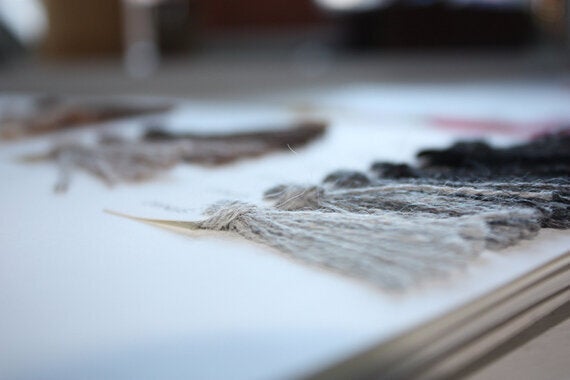
A yarn card from Inca Tops, one of Peru's major spinning mills (own photograph)
The long-term goal of study 34 is to develop a fully sustainable and transparent supply chain - beginning with the manufacture of the garments in the UK but eventually, back to the very origins of the fibres used and the animals that produce them. Having witnessed first hand the care and compassion of the Peruvian people towards their land, animals and ancient traditions, my trip certainly ignited a new feeling of hope.

'Quality begins with people, not things', a sign in a Peruvian factory I visited
(own photograph)
The overwhelming impression I took away from my short trip was Peru's deep sense of community, something that I think is undervalued in western society today. Leading mills like Michell Group and Inca Tops right down to the smaller players including La Republica del Tejido seek to work with local communities to preserve their knowledge and skills - and they all wanted to shout about it.
Alpaca fibre
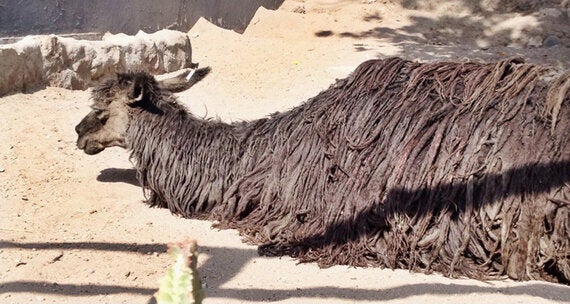
A Suri Alpaca (own photograph)
Peru hosts some 75% of the world's total alpaca population, of which there are two kinds: the Huacayo and the Suri. The Huacayo, hardwearing and characterised by its fluffiness, is the more common variety, making up approximately 93% of the alpaca population. The rarer Suri (pictured above) makes up the rest and has a dreadlock type fleece with more silky fibres.
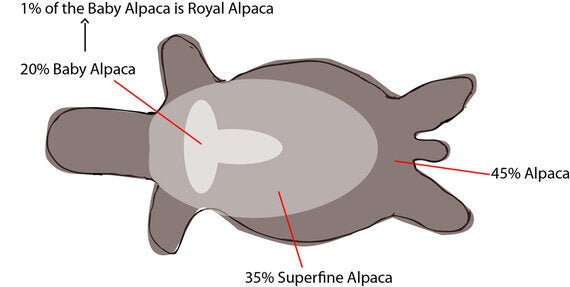
Re-creation of a breakdown of an alpaca fleece based on an explanation from Andrés Chaves at Inca Tops (own drawing)
When an alpaca is sheared (once a year) the fibres are sorted by hand. These are then classified by their thickness and colour in a process that can never be mechanised as 'the variable characteristics of the fibre can be assessed only by experienced hands and eyes'.
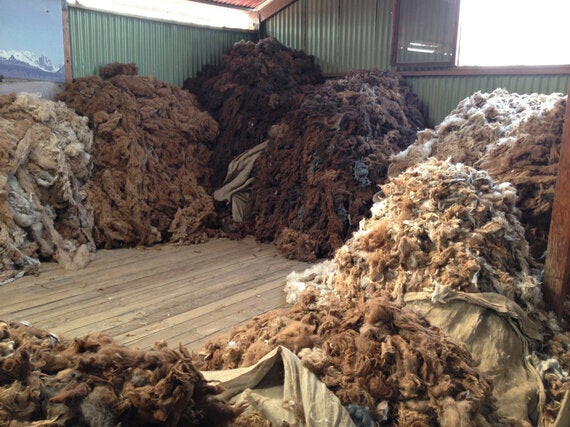
Fleece sorting (own photograph)
The wide range of natural colours afforded by the alpaca (not found among any other natural fibres) encourages less dying, which in turn results in less risk of damage to the environment. It is also non-flammable, has relatively high elasticity and strength, does not felt as readily as other animal fibres, has an excellent drape and natural lustre and is very soft to handle. It's also easy to launder.
Living in an atmosphere where temperatures can fluctuate as much as 30˚C in one day, the alpaca possesses a high tolerance to temperature change, a quality which is transferred to clothing made with its fibre.
Clearly, this material packs a serious punch. But the animal itself also possesses extraordinary qualities to admire...
Sustainability
If we needed a lesson in a sustainable lifestyle, we might look to the alpaca for inspiration.
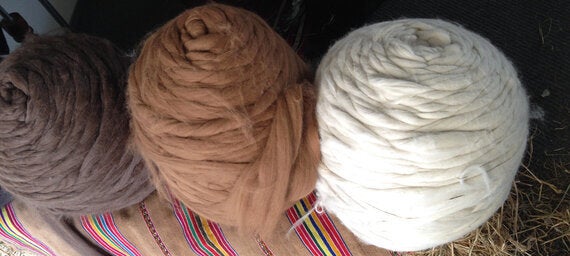
Alpaca tops, pre spinning (own photograph)
As one of the oldest domesticated animal species in the world, it was relocated from the more succulent pastures of the lower Andes regions at the time of the Spanish conquest, to higher mountainous areas with altitudes over 4000 metres above sea level. The alpaca was able to adapt to these less favourable living conditions and this adaptability is surely the key to its success:
'It is precisely the reality of climate change, affecting particularly the habitat of the alpaca, that highlights one of the most interesting aspects of breeding these animals. The Andean glaciers have been shrinking faster and faster in recent decades. Weather cycles are now extremely variable and water resources will end up insufficient for the development of the impoverished high-altitude pastures. This is how the genetic adaptation of the alpaca, with its great capacity to live on poor pastures, its cushioned paws that do not damage the soil, and its peculiar manner of grazing without pulling plants up by the roots, plays an incomparable role in the conservation of these fragile ecosystems. No other animal could be kinder than the alpaca with regard to preserving the habitat of the high mountain regions of the Andes.' - Alonso Burgos
An alpaca looks after the land it lives on and its breeder looks after the beloved animal it guards. So it is only right that we, as consumers, should treasure and value anything made from this supremely sustainable animal.
But we should also follow its example, by looking after our own living environment, and adapting to its natural limitations by taking no more from it and putting no more into it than it can naturally sustain.
This post was originally published on the study 34 blog
